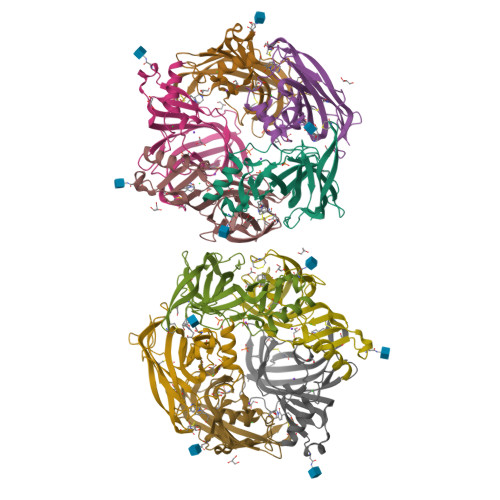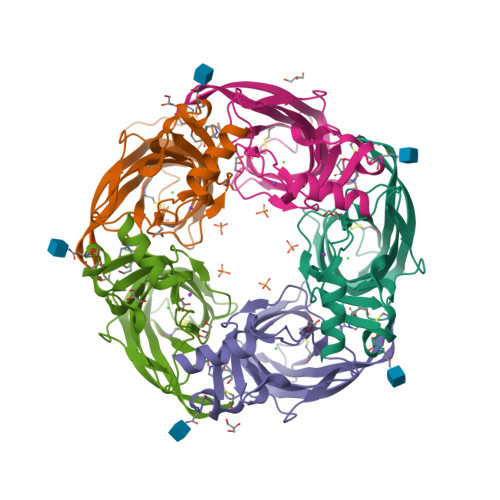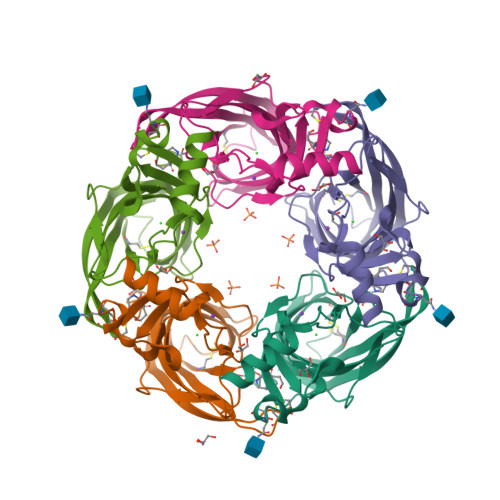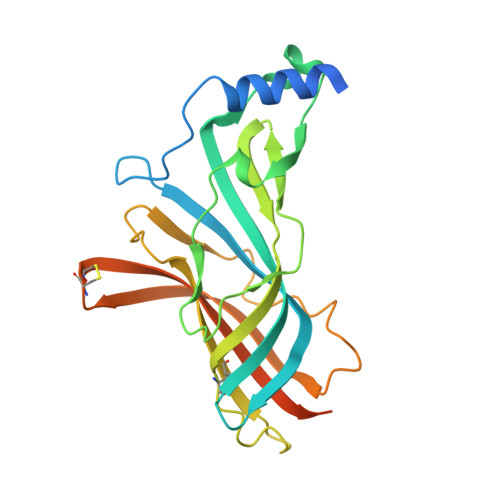The thermodynamic profile and molecular interactions of a C(9)-cytisine derivative-binding acetylcholine-binding protein from Aplysia californica.
Davis, S., Rego Campello, H., Gallagher, T., Hunter, W.N.(2020) Acta Crystallogr F Struct Biol Commun 76: 74-80
- PubMed: 32039888
- DOI: https://doi.org/10.1107/S2053230X20001168
- Primary Citation of Related Structures:
6T9R - PubMed Abstract:
Cytisine, a natural product with high affinity for clinically relevant nicotinic acetylcholine receptors (nAChRs), is used as a smoking-cessation agent. The compound displays an excellent clinical profile and hence there is an interest in derivatives that may be further improved or find use in the treatment of other conditions. Here, the binding of a cytisine derivative modified by the addition of a 3-(hydroxypropyl) moiety (ligand 4) to Aplysia californica acetylcholine-binding protein (AcAChBP), a surrogate for nAChR orthosteric binding sites, was investigated. Isothermal titration calorimetry revealed that the favorable binding of cytisine and its derivative to AcAChBP is driven by the enthalpic contribution, which dominates an unfavorable entropic component. Although ligand 4 had a less unfavorable entropic contribution compared with cytisine, the affinity for AcAChBP was significantly diminished owing to the magnitude of the reduction in the enthalpic component. The high-resolution crystal structure of the AcAChBP-4 complex indicated close similarities in the protein-ligand interactions involving the parts of 4 common to cytisine. The point of difference, the 3-(hydroxypropyl) substituent, appears to influence the conformation of the Met133 side chain and helps to form an ordered solvent structure at the edge of the orthosteric binding site.
Organizational Affiliation:
Division of Biological Chemistry and Drug Discovery, School of Life Sciences, University of Dundee, Dow Street, Dundee DD1 5EH, Scotland.























